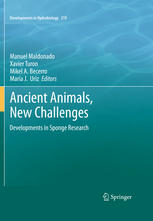

Most ebook files are in PDF format, so you can easily read them using various software such as Foxit Reader or directly on the Google Chrome browser.
Some ebook files are released by publishers in other formats such as .awz, .mobi, .epub, .fb2, etc. You may need to install specific software to read these formats on mobile/PC, such as Calibre.
Please read the tutorial at this link: https://ebookbell.com/faq
We offer FREE conversion to the popular formats you request; however, this may take some time. Therefore, right after payment, please email us, and we will try to provide the service as quickly as possible.
For some exceptional file formats or broken links (if any), please refrain from opening any disputes. Instead, email us first, and we will try to assist within a maximum of 6 hours.
EbookBell Team

0.0
0 reviewsThis book summarizes the latest advances in sponge science through a concise selection of studies presented at the VIII World Sponge Conference. The collection of articles reflects hot, ongoing debates in molecular research, such as the monophyletic versus paraphyletic nature of the sponge group, or the new awareness on pros and cons of standard barcodes and other markers in sponge taxonomy and phylogeny. It also features articles showing how the new sequencing technologies reveal the functional and phylogenetic complexity of the "microbial universe" associated to sponge tissues. The ecological interactions of sponges, the effects of nutrients and pollutants, the variability in reproductive patterns, and the processes generating genotypic and phenotypic variability in sponge populations are covered in several contributions. Zoogeography, population structure and dynamics are also approached with both traditional and molecular tools. The effect of anthropogenic disturbance on the natural environment finds its place in this volume with papers dealing with metal accumulation and the potential role of sponges as biomonitors. Biodiversity data from unexplored tropical and deep sea areas are presented. We hope readers will enjoy the selection of papers, which we believe represent collectively a significant contribution to our current understanding of sponges.
Previously published in Hydrobiologia, vol. 687, 2012